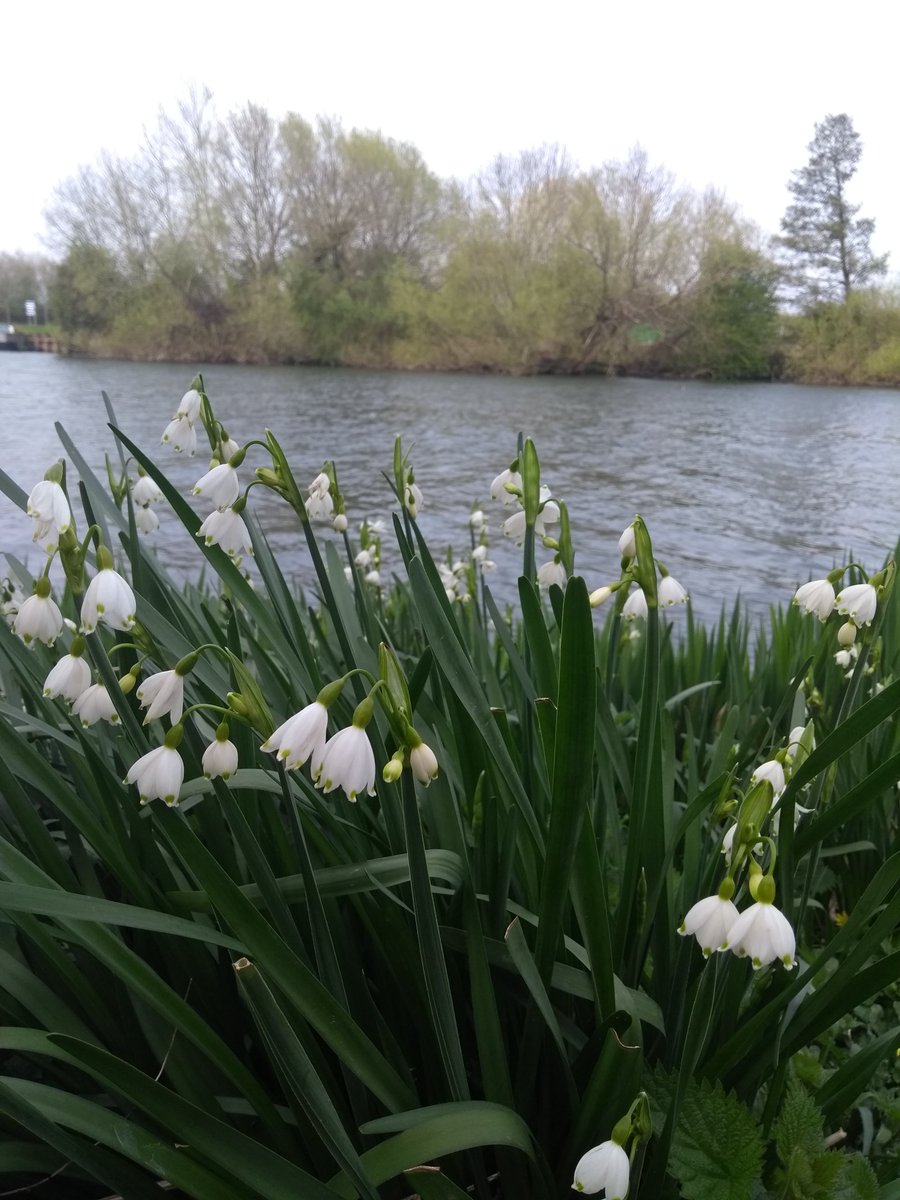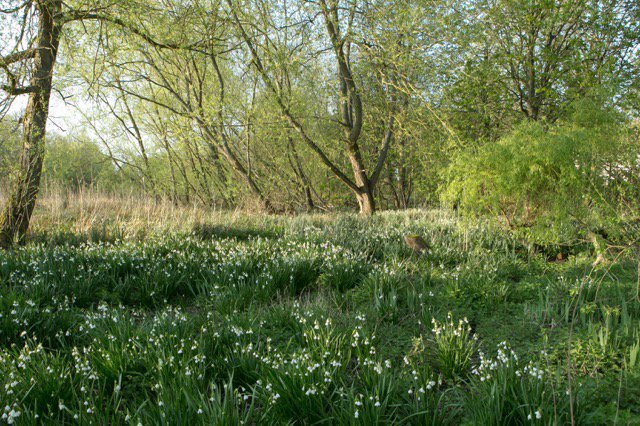Height 45-55cm
Conditions Very versatile.
Hardiness H6
Season of interest April to May

There is no mistaking the so-called Summer snowflake, so long as you do not take its name too literally. The Summer Snowflake, sold as Leucojum aestivum, flowers firmly in early April. Its height and vigour mark it out, while the long green leaves are as obvious as those on a big autumn-flowering colchicum. They show through the ground in December and early January and are one of the earliest reminders that spring will one day rescue us from the cold and rain. I know no other plant whose leaves appear so far in advance of the flower stems, nor any other native flower whose presence in England is so often overlooked. It also turns up in damp places at points between Ireland and the Caucasus, but in England, it is best known in Berkshire along the upper Thames and beside the River Loddon where it is worth a visit. Its siting there is a clue to its taste in the garden. A riverside plant, it likes good, damp soil, something which these recent wet winters have brought within reach of us all. Shade or sun are less important than damp round its roots. It is well able to cope with competitors as it is surprisingly tall and tough. It grows up to two feet and sends out strong and bright green leaves. I have seen clumps of it in light Berkshire woodland and have often wished that I had a small patch of hazel trees or alders in a garden beneath which I could mass it with food forms of Christmas Rose. The bulbs are like the brown bulbs of narcissus and increase quickly when happy. Twenty would become a hundred over five years. The white flowers hang in twos and threes above the long leaves on stems which arch prettily
Obviously, this is no plant for a small rock garden or a shaded plunge-bed. The leaves take up too much space and the flowers are as robust as a hailstone, not a late spring snowflake. It belongs in damp shrubberies, beside a front drive or a stream. In the name of better gardening, I suggest you order a form called Gravetye Giant which has bigger white flowers. It was noticed by William Robinson among the bulbs which he scattered in thousands through the woods of his Sussex manor-house, when trying to prove his theories about wild gardening on a grand scale.
Robin Lane Fox
The most celebrated of these sites are on the River Loddon in Berkshire, where L. aestivum colonises banks, creeks, swamps, islands and marshy meadows. They are pure encantment, these multitudes of nodding Naiads, when seen mirrored in the slow-moving water or carpeting the Stygian stands of alder. Little wonder that another name for this species is Loddon lily, that it once played a part in local May rites or that, by popular vote, it is now Berkshire’s county flower.
The summer snowflake will grow in sun or shade and most damp soils. It flourishes, however, in conditions that resemble its natural habitats: meadow that floods; the margins of ponds, lakes and streams; even with its bulbs under shallow water, as when it’s container grown and plunged in pools.
In 1924, Wiliam Robinson gave the name Gravetye Giant to an especially robust, tall and floriferous form that he grew at Gravetye Manor in West Susex. This cultivar remains widely available and unbeatable. In our garden, it’s naturalised in grass that’s sodden all winter. Taking over soon after it’s co-colonist Fritillaria meleagris finishes, its flower-heads sway and shimmer with a purity and gracefulness so mesmeric and rare that they might indeed be snowflakes in summer.
Mark Griffiths

Fragrant, snow-white, bell-shaped flowers tipped with green. I have planted it among the ferns on the edge of a woodland garden and in borders with narcissus Thalia and Tulipa Spring Green for a more sophisticated combination.
Declan Buckley
The name summer snowflake may sound very pretty, but this is a tough plant – not invasive , but one that builds up, even when planted singly, into fat clumps. Their heads will often seem slightly too small for their bodies, more or less the same size as those of the spring snowflake, but on taller stems of 50 cm and with several dangling heads to a stem, They’re trouble-free, will flower reliably and keep the bulb season going. What more could you ask for?
A very useful thing compared to some other bulbs is that summer snowflakes will grow practically in water and are happy in a heavy soil. In fact, almost the best way to see them is in clumps arching out over water towards their reflections.
Nine times out of ten, when you search for summer-snowflake bulbs you find a variety called ‘Gravetye Giant’. Its vigour is at the top end of the spectrum and even its heads are not too small. If you search hard enough, however, you should be able to get the ordinary form. At 35-40 cm it’s a little less chunky, but still tough. Whichever form you have, though, they will remain in flower for a few weeks and will even naturalise, spreading themselves around in drifts, They’re too little known and too little planted, so look out for a potful.
Stephen Anderton
This very good form of a beautiful native was selected at Gravetye by William Robinson. Particularly robust and long-flowering, it will accept almost any soil but seems to thrive in one of our damp meadows.
Tom Coward
In damp woodland William Robinson planted quantities of the Summer Snowflake. Looking like a giant snowdrop, the plant grows wild in Europe, and around Limerick a particularly fine large-flowered form was known to exist. Robinson may have been given bulbs on one of his visits to Ireland for his leucojum also had bigger flowers than usual, and several to a stem. He gave plants away to visitors and friends and it became known as ‘Gravetye Giant’.
Alex Pankhurst